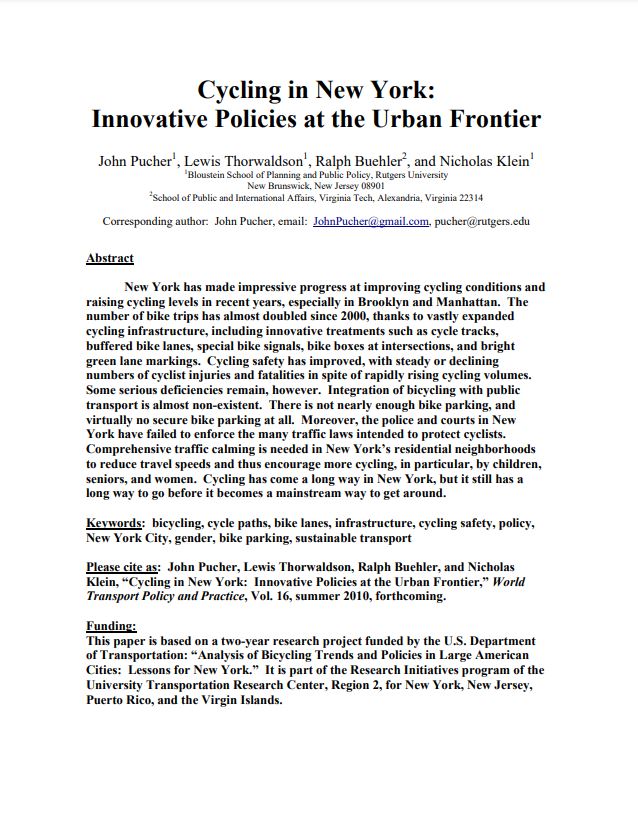Abstract
New York has made impressive progress at improving cycling conditions and raising cycling levels in recent years, especially in Brooklyn and Manhattan. The number of bike trips has almost doubled since 2000, thanks to vastly expanded cycling infrastructure, including innovative treatments such as cycle tracks, buffered bike lanes, special bike signals, bike boxes at intersections, and bright green lane markings. Cycling safety has improved, with steady or declining numbers of cyclist injuries and fatalities in spite of rapidly rising cycling volumes. Some serious deficiencies remain, however. Integration of bicycling with public transport is almost non-existent. There is not nearly enough bike parking, and virtually no secure bike parking at all. Moreover, the police and courts in New York have failed to enforce the many traffic laws intended to protect cyclists. Comprehensive traffic calming is needed in New York’s residential neighborhoods to reduce travel speeds and thus encourage more cycling, in particular, by children, seniors, and women. Cycling has come a long way in New York, but it still has a long way to go before it becomes a mainstream way to get around.
